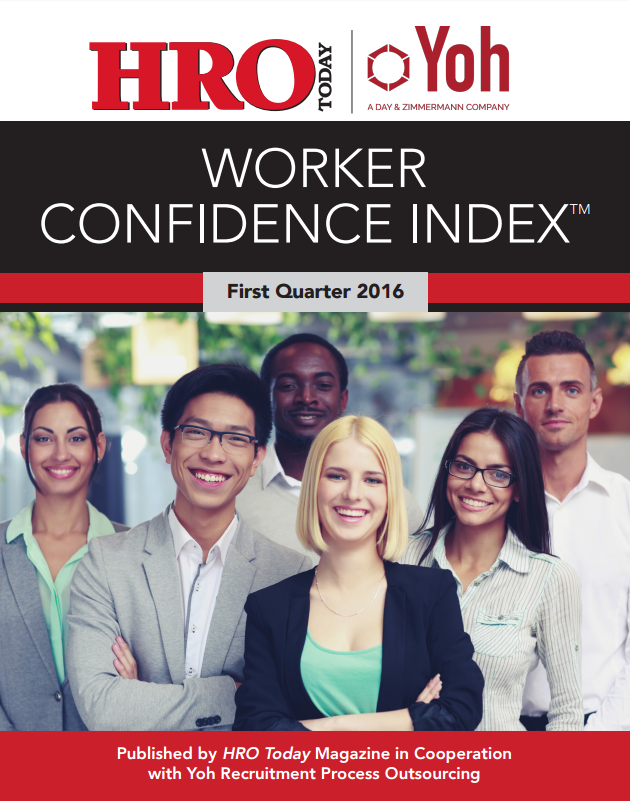 Let’s face it, American workers are fickle. We want more, and we want it faster and better. We may love our job today, but at lunch we may do a search on the internet and start thinking about greener pastures. So, does a positive move in an index like the Worker Confidence Index (WCI) mean that because employees are more confident and happy at work, they will stay for the long-haul?
Let’s face it, American workers are fickle. We want more, and we want it faster and better. We may love our job today, but at lunch we may do a search on the internet and start thinking about greener pastures. So, does a positive move in an index like the Worker Confidence Index (WCI) mean that because employees are more confident and happy at work, they will stay for the long-haul?
I’d love to say “yes,” but the reality is, there is no guarantee. But what it does indicate is that your recruiting strategies have to be able to ebb and flow like a worker’s confidence.
HRO Today Worker Confidence Index
For the past few quarters Yoh, along with HRO Today, published a quarterly Worker Confidence Index (WCI). It’s the only index of its kind and in case you missed it, the latest index is up. What does this mean for you and your recruiting strategies? Maybe a lot.
The WCI has largely led the Consumer Confidence Index (CCI) and while that alone is interesting, the WCI is more about how workers feel about their jobs, their job prospects and their work-based optimism as they go about their daily work. It also may relate to how easy or difficult it is to recruit them away from their current employer, or more to the point: from you as an employer.
Indexes like the WCI and the CCI are important to watch because they indicate times when workers may be thinking about looking for a job – or thinking more about taking a job with you. It’s these times that you and your company need to capitalize on, and your recruiting resources and strategies need to be ready to take advantage of these times (or ready to react when it makes recruiting harder).
This is also why a single recruiting strategy is not the best. If you only have one way to recruit, or only a single set of resources to direct, when the need arises in different or multiple areas, you may be unable to respond adequately.
Let me give you one example: high volume recruiting vs. highly-skilled recruiting. Both come with challenges. If you need to increase recruiting for high volume positions, you are looking for speed and efficiency with a basic set of qualifications. Conversely, for highly-skilled positions you are looking for specific, hard-to-find qualifications in a low-volume, resource-intensive environment. If you were to experience a spike in requirements in both areas, where would you apply your resources?
That’s just one example, but a common one. And it’s a good example of why indexes like the WCI can be important to follow. They may signal times when additional resources are needed, or different strategies must be employed (pun intended).
In an election year, or any year where worker confidence can unexpectedly spike or drop, having flexible recruiting strategies can be your hedge against changes that may impact your company’s ability to hire new talent. So if confidence is building, ask yourself, how will you recruit workers away from their current jobs – or, how are your competitors recruiting workers away from you.
This blog was written by Matt Rivera. Matt serves as Vice President, Marketing and Communications and is responsible for overseeing all aspects of Yoh’s marketing and brand communications. Matt holds a degree in Journalism/Public Relations and has been working in the staffing industry for more than 25 years. Prior to this role, Matt held many different roles from branch recruiting and proposal writing to technology management and online marketing.





